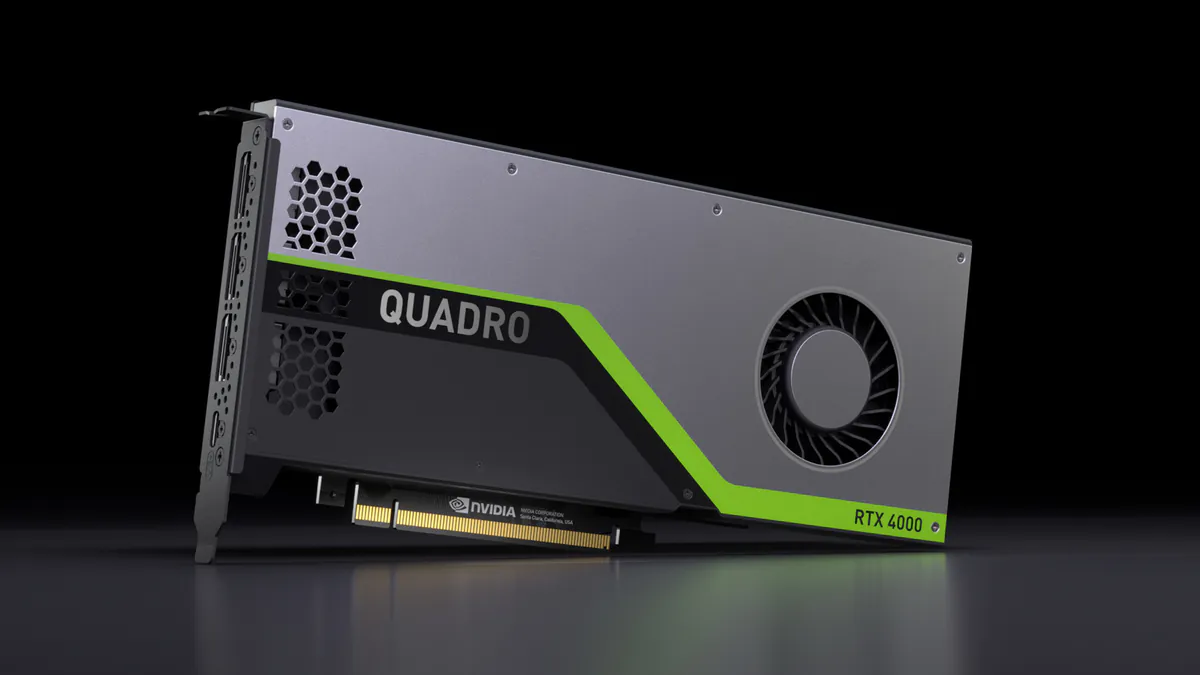Nvidia once again misleads buyers with the RTX-4000 series - an expression of aggressive corporate culture that has characterized the GPU pioneer for years.
Hooray, the RTX 4000 graphics card series is announced, finally more performance for gamers after more than two years! For 50 percent more performance, according to the manufacturer, only about 30 percent more money is due! So everything as usual in the market for gaming graphics cards, which is subject to very special rules thanks to a duopoly?
Not at all! Nvidia, which is already very marketing-driven, has made a special effort to confuse prospective buyers this time and not only shifted the price structure upwards. The timing of the announcement - since delivery will not take place for a few weeks - the naming and the few technical details contain as many smoke candles as possible, so that prospective buyers might be fooled.
This becomes clear when specifications are added after the polished announcement video, which did not even appear in the livestream. The RTX 4080 with 12 GB is not just a slightly cheaper model of the 16 GB card, but a completely different graphics card - despite the same name "4080". It is based on a different GPU, the AD104 instead of AD103 (descending numbers mean larger GPUs at Nvidia), and it has 21 percent fewer shader units. Although the clocks are a bit higher in the smaller model, that hardly compensates for this disadvantage. The price difference of around 370 Euros is so big that many will probably go for the smaller model - it only has less memory at first glance, as we are used to from earlier GeForces.
Of course, technically interested people don't only buy according to model number and RAM equipment, but globally, marketing often wins against the specification. Example USA: There are still the big computer retail chains like Microcenter, where dozens of graphics cards are on the shelves. And because Nvidia also reserves control over the design of the packaging for all GeForce card providers in the context of its Green Light program, there should only be 12 or 16 GBytes as a big differentiator in the case of two RTX 4080s.
In view of the smaller card's specs, it should have been called RTX 4070, as usual in the last three generations. Why Nvidia did not do that right away? That can only be due to the presentation of AMD's R7000 series scheduled for November 3. If it turns out to be surprisingly fast and cheap, an RTX 4070 can be added quickly, and possibly Ti models of the 4080 and 4090. Nvidia probably just couldn't wait to see what the competitor would bring so that it wouldn't relinquish the title of the fastest graphics card for a few days. Egos play a big role there.
Aggressive approach as company culture
This is not only the case in product marketing, but is firmly embedded in Nvidia's corporate culture. This became visible recently when EVGA ended the cooperation with Nvidia after more than 20 years. Among other things, the CEO complained about a lack of respect, where Nvidia claims any enthusiasm for new products only for itself and leaves nothing for the so-called "partners". This was also evident in the 4000 series launch video: Not one card from a graphics card partner manufacturer had faded in by Nvidia.
It can also be verified via other Nvidia partners that prices have only been announced to the partners on the day of the launch for several generations, Nvidia's own Founders Edition models are always the cheapest, and drivers for reasonable tests are not available for the manufacturers in advance or only in a very limited form. In short: Hardware manufacturers are supposed to invest large amounts in development and production without knowing the price, performance and stability exactly. If something goes wrong, they can of course take responsibility for it with their own brand name.
Speaking of drivers: Nvidia's distrust of its direct customers leads to the bizarre situation that manufacturers of graphics cards have already asked journalists in the weeks before a market launch if they can't leave the drivers somewhere inconspicuous. This is of course forbidden by contract, but it doesn't mean that media are generally preferred or even treated respectfully at Nvidia. The decades-long list of harassment, pressure measures and other things is too long for this commentary, so only two examples from more recent times: In 2018, all media that still wanted to receive test samples or information were supposed to sign a general NDA for all times and all products and technologies, and in 2020, the YouTube channel Hardware Unboxed was excluded from sampling because it did not test the graphics cards as Nvidia would have liked.
For those who think this is all too harsh or simply a "free market," check out the rant by the great Youtuber Linus Sebastian (LTT) on the Hardware Unboxed case which has a few more stories from the sewing box. It's all about fairness, respect and good cooperation - even with the "end customers". But it seems that, at least as far as gamers are concerned, those count less and less for Nvidia.
Last quarter, Nvidia's gaming division made $2.04 billion in revenue, and $3.81 billion in data center GPUs. Growth in the latter was 61 percent, but there was a 33 percent contraction in gaming cards. In the conference call for financial journalists, Nvidia CEO Jensen Huang then announced they would "reduce sales in the next couple of quarters to correct inventory at dealers. We also have price positioning programs in place for our current products to prepare for the next generation." Read: RTX 3000 prices are being kept artificially high because there are still too many of them. Logically, with such practices, RTX 4000 prices must be even higher.
Hey, Nvidia: It's not the gamers' fault that you miscalculated your production predictions for the finally ended boom in crypto mining on GPUs. Nor is it their fault that the wafers at TSMC have now become more expensive again after your short excursion to Samsung as a production partner. The fact that you react to your own wrong decisions with extreme prices and cheat packs like the RTX 4080 with 12 GBytes seems panicky and not a bit as confident as one could expect from a technology leader for gaming GPUs. Although: Playstation and Xbox have had a graphics unit from AMD for two generations. There are certainly good reasons for that, which you just didn't see about ten years ago.


No comments yet